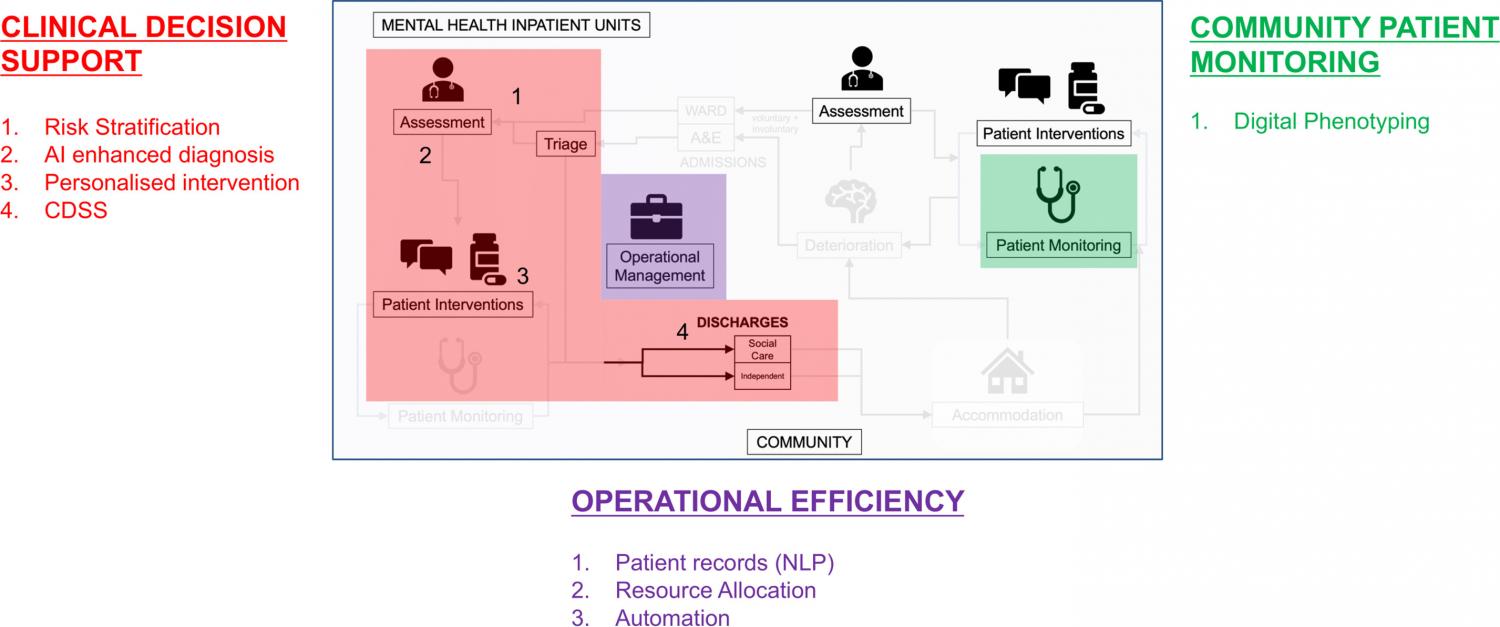
Elsevier, Heliyon, Volume 7, May 2021
Introduction: Growing demand for mental health services, coupled with funding and resource limitations, creates an opportunity for novel technological solutions including artificial intelligence (AI). This study aims to identify issues in patient flow on mental health units and align them with potential AI solutions, ultimately devising a model for their integration at service level. Method: Following a narrative literature review and pilot interview, 20 semi-structured interviews were conducted with AI and mental health experts. Thematic analysis was then used to analyse and synthesise gathered data and construct an enhanced model. Results: Predictive variables for length-of-stay and readmission rate are not consistent in the literature. There are, however, common themes in patient flow issues. An analysis identified several potential areas for AI-enhanced patient flow. Firstly, AI could improve patient flow by streamlining administrative tasks and optimising allocation of resources. Secondly, real-time data analytics systems could support clinician decision-making in triage, discharge, diagnosis and treatment stages. Finally, longer-term, development of solutions such as digital phenotyping could help transform mental health care to a more preventative, personalised model. Conclusions: Recommendations were formulated for NHS trusts open to adopting AI patient flow enhancements. Although AI offers many promising use-cases, greater collaborative investment and infrastructure are needed to deliver clinically validated improvements. Concerns around data-use, regulation and transparency remain, and hospitals must continue to balance guidelines with stakeholder priorities. Further research is needed to connect existing case studies and develop a framework for their evaluation.
